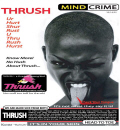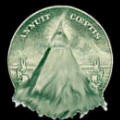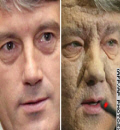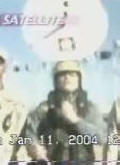Scientists are most interested, though, in quantum computing applications, where the potential performance gains are nearly unimaginable. (See "Liquid Logic," Wired 9.09, page 152.) Future quantum dot processors may well combine all the best features of digital, analog, and quantum processing. In principle, the same hardware could be used for any and all of these operations, and might even switch modes dynamically, depending on the problem being solved. In the face of such technology, words like "supercomputer" simply fail. But computer chips - even blindingly superior ones - have all but lost their power to amaze us. Fortunately, the promise of artificial atoms goes way beyond mere computing.
The Chemistry
Set
It turns out that you can have a quantum dot without a P-N-P junction, as long as you have some other means to confine the electrons. Researchers have achieved excellent results with simple geometries, such as tiny beads of semiconductor with a thin, insulative coating. Amazingly, this means that quantum dots can also be grown in a chemistry lab. It takes about 15 minutes to heat and mix the appropriate chemicals, and then minutes or hours for the resulting nanocrystals to grow to the desired size, after which they can be deposited onto a chip, where they will line up as neatly as oranges in a box. MIT chemist Moungi Bawendi uses this surprisingly precise technique to make artificial solids with interesting electrical and optical properties.
These chemically produced dots unfortunately don't have tiny electrodes running up to them, so they can't be controlled individually as artificial atoms. But by running a voltage through the semiconductor substrate, we can drive electrons into and out of all the dots simultaneously. Because of slight irregularities in size, shape, and number of dopant atoms, there's no guarantee that all these artificial atoms are behaving in precisely the same way, but the average number of excess electrons can be controlled, and the resulting properties measured. Bawendi has grown very large solids: tens of centimeters across and tens of microns thick. Held together only by surface tension forces, these solids are waxy in texture and easily scratched or broken.
Programmable Matter (n): any physical substance whose properties can be adjusted precisely and repeatably through electrical or optical stimulation.
Unfortunately, at the lower energy states, with few electrons aboard the dots, these materials are also highly insulative, which makes it nearly impossible to drive additional current through them unless the electrodes providing the voltage are very close together. Typically, interesting effects are observed only in samples that are at most a few microns (or thousands of nanometers) across, and with just a few layers of dots on top of the semiconductor. We're talking about specks, really. Nevertheless, they give us our first look at what programmable substances are like, and what they may be capable of.
One of the properties of Bawendi's artificial matter is fluorescence: very precise fluorescence at narrow frequency ranges - something that does not occur in nature. Just turn the voltage source on, and away it glows. These solids can also be excited optically rather than electrically - they have the fascinating ability to drink in light of almost any wavelength and spit it back out in a nearly monochromatic stream. The light source can be of almost any type: white, colored, laser, ultraviolet - what comes out is a single, bright color determined by the exact characteristics of the quantum dots. These crystals also reflect, refract, and absorb light in intriguing - and electrically variable - ways. Other properties that have been investigated include the photoelectric effect (as in solar panels), photodarkening (as in light-sensitive sunglasses), photoconductivity, and electrodarkening. In related work, researchers in London have created an artificial solid that is normally opaque but turns transparent when excited by a laser.
These substances are not, to say the least, ordinary semiconductors. As the fatherly Kastner explains in patient yet unmistakably enthusiastic tones, the properties of an artificial solid can be completely different from those of the semiconductor it's made from. "Gold" has been created from a grid of cadmium selenide, although the substrate still has an effect on the final properties. Not real gold, then, but some closely related and decidedly improbable material: gold-cadmium-selenide, straight from the monkish, 13th-century dreams of alchemist Roger Bacon.
Not Natural
Artificial atoms have been a boon to quantum physicists because they provide a new window into natural atoms. Because their structure does not rely on electrons' attraction to a positively charged nucleus, but on electrostatic repulsion and the geometry of P-N-P junctions, artificial atoms are generally at least 50 times larger than natural ones and physically overlap with at least 50 by 50 by 50 of the atoms in the semiconductor substrate. That's an important difference.
Also, notably, the orbital shapes of natural atoms - spherical, dumbbell, pinwheel, tetrahedral, et cetera - arise from the purely spherical symmetry of the nucleus' electric field. Artificial atoms do not share this characteristic, and in fact many of them are "pancaked," foreshortened along one dimension. And, depending on the shape and voltage of the repulsive fence, artificial atoms can have square or triangular or any other sort of symmetry. Multipart fences with different voltages on each section can even lead to asymmetrical atoms.
Another difference of artificial atoms is that the energy of the electrons is a direct function of the physical size of the quantum dot they reside in. Bigger atoms mean lower energies and blurrier distinctions between energy levels. This is bad, because the randomizing effects of "thermal noise" can destroy any atomlike behavior in the system. For this reason, today's large quantum dots - some of them a thousand nanometers or more in diameter - show interesting properties only at liquid helium temperatures: 3 degrees Kelvin and below. Smaller quantum dots are highly desirable, because they have higher energy and sharper definition. The closer you get to the size of a natural atom, the better you can mimic its behavior. The ultimate goal, our scientists agree, is to construct artificial atoms that function at room temperature and above.
To put it another way, the chemical/optical/electrical behavior of real atoms is defined by the outermost layer of electrons. In the words of Sun's Howard Davidson, "Everyday life happens in the outer shell, between a half and about 2 electron-volts." An electron-volt is a measure of energy equivalent to 1.6 x 1019 joules, and according to Marcus, this implies an atomic size in the sub-nanometer range. This doesn't mean our electric fence has to be that small, though: The electrons, repelled from the fence, tend to crowd toward the center of their enclosure. The artificial atom they form is significantly smaller than the fence itself. Anyway, small is good, small is versatile, and in fact, by erecting concentric fences atop a quantum well, we should be able to create dots with ever more tunable sizes and energies, which would be more versatile still.



.jpg)

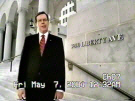
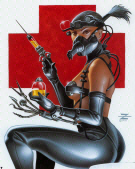
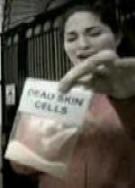

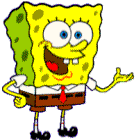


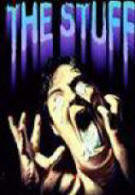
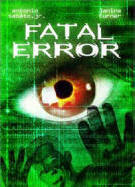
.jpg)








